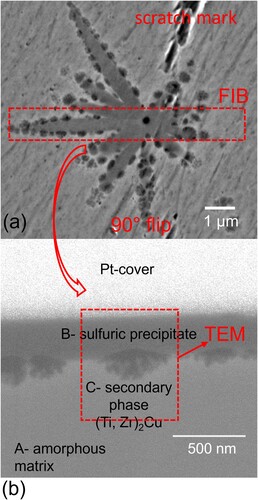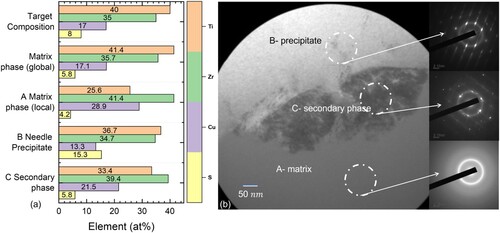Figures & data
Figure 1. (a) Synchrotron diffraction data I(Q) for three different plates. The insert displays the BSE contrast SEM images as well as the determined area percentage (A%) of precipitated phases. (b) Synchrotron X-ray diffraction spectra, resulting from the 2 mm thick plate of Ti40Zr35Cu17S8 (solid blue line), shown together with the theoretical spectrum (in orange), combining amorphous background (blue dashed line) and calculated intensity from the Rietveld refined (Ti, Zr)2Cu cell, as well as the residual (solid black line).

Figure 2. (a) SEM image in BSE contrasting mode showing a precipitate in the synchrotron X-ray amorphous 1.5 mm plate sample. (b) In-lens detector image, showing mainly material contrast of the FIB cut lamella with applied protective Pt-cover applied on top, for later thinning operation. The section of the sample where TEM analysis was performed on this specimen is marked by a dashed rectangle labelled TEM.

Figure 3. (a) Local TEM-EDS analysis results for the three different phases, namely the local amorphous matrix (A), the sulphuric precipitate (B) and the secondary phase (C) as well as SEM-EDS results of the global matrix phase and the nominal composition for reference. (b) TEM bright-field image of the interface between sulphuric precipitate (B) and local matrix phase (A), containing the secondary phase (C) as well as their diffraction images. The corresponding TEM-EDS spectra are shown in .


